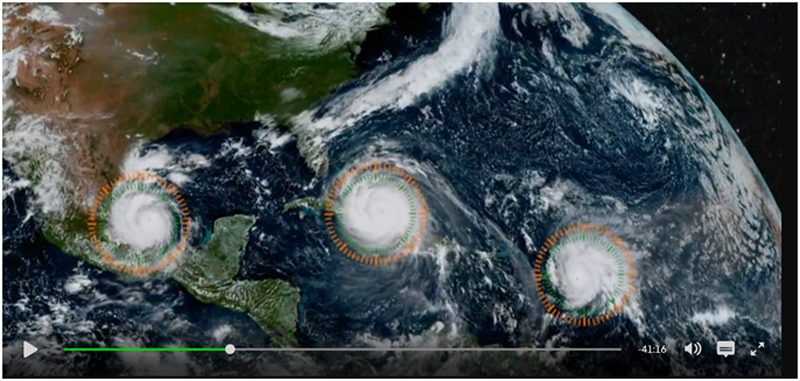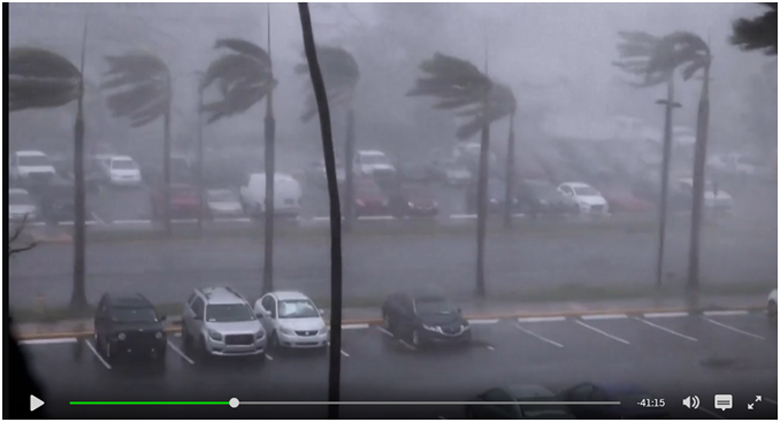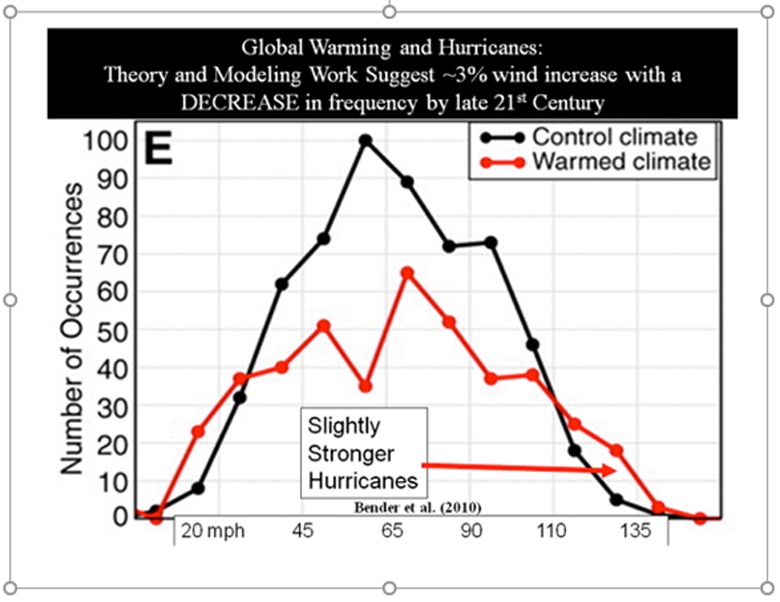På SVT visar man
program för att öka klimatångesten. Vetenskapens värld. Stigande
havsnivåer och orkaner, orkaner, alltid orkaner. Hur många gånger har vi
inte sett detta.


I IPCC:s
klimatrapport som kom i höstas sägs det så här. Kap 3 s 47
Moreover, studies that have used more homogeneous records but that were
consequently limited to rather short periods of 20 to 25 years in
length, have reported no statistically significant trends or
decreases in the global number of these systems (Kamahori et al.,
2006; Klotzbach and Landsea, 2015). CMIP5 model simulations of the
historical period have also not produced anthropogenically induced
trends in very intense tropical cyclones (Bender et al., 2010;
Knutson et al., 2010, 2013; Camargo, 2013; Christensen et al., 2013),
consistent with the findings of Klotzbach and Landsea (2015). There
is consequently low confidence in the larger number of studies reporting
increasing trends in the global number of very intense cyclones. GCM
projections of the changing attributes of tropical cyclones under high
levels of greenhouse gas forcing.
Vidare
Hittills har man inte sett någon märkbar
trend när det gäller orkaner, Ingen mänsklig påverkan och att det är låg
tillförlitlighet hos de många rapporter som säger att de stora orkanerna
ökar.
Sen har vi detta med datamodellerna.
Totalt ska orkanerna minska med vissa stora ska öka i frekvens.
Körningen av dessa projektioner ser
grafiskt ut så här.

Hämtat från Landseasom IPCC ovan hänvisar till.
http://www.aoml.noaa.gov/hrd/Landsea/gw_hurricanes/
Se mer på
http://lagmansnatursida.se/dbarkiv/2018/vecka41/db18okt08.htm